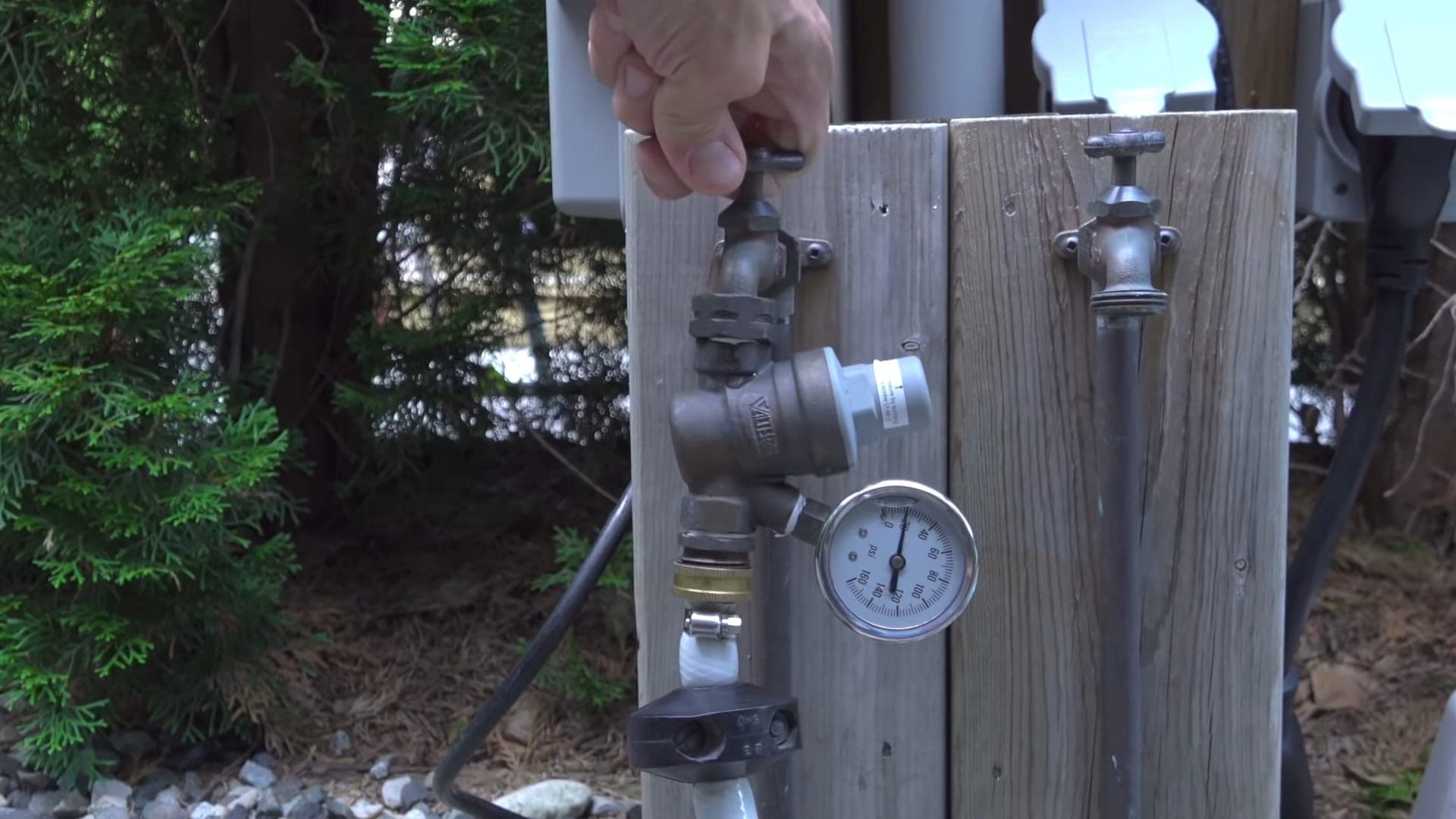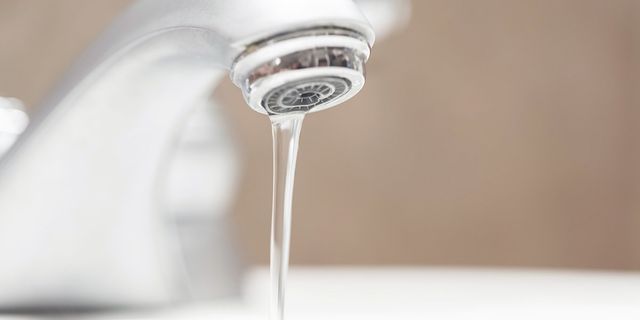Helpful Methods for Resolving Low Water Pressure in Your Home
Helpful Methods for Resolving Low Water Pressure in Your Home
Blog Article
Just how do you actually feel about 10 Reasons for Low Water Pressure in Your House?

Low water stress in your home can be a discouraging problem, influencing everything from bathing to cleaning dishes. If you're experiencing weak water flow, there are numerous possible causes and remedies to explore. In this guide, we'll review common factors for low tide stress and sensible actions to attend to the problem successfully.
Intro to Low Water Stress
Low tide stress happens when the circulation of water from your faucets, showers, and other components is weak than typical. This can make everyday jobs extra tough and less efficient. Recognizing the root causes of low tide pressure is critical to finding the ideal remedy.
Common Reasons For Low Tide Stress
Pipeline Obstructions
With time, pipes can come to be obstructed with mineral deposits, sediment, or debris, limiting the flow of water. This is a typical problem in older homes with galvanized steel pipelines.
Corrosion
Corrosion within pipes can result in leaks and minimized water stress. Rust accumulation can constrict water flow, particularly in maturing plumbing systems.
Faulty Pressure Regulators
Pressure regulatory authorities are responsible for keeping consistent water pressure in your home. If they malfunction, it can cause low tide stress or unequal flow throughout your home.
Metropolitan Water Supply Issues
Sometimes, the problem exists outside your home. Metropolitan water problems, such as main line leaks or maintenance work, can temporarily lower water pressure in your location.
Just How to Diagnose Low Tide Stress
Examining Faucets and Fixtures
Beginning by examining the water stress at different taps and components throughout your home. If the problem is separated to particular areas, it might suggest localized troubles.
Evaluating Pipes
Inspect visible pipelines for indications of leaks, deterioration, or obstructions. Take note of any kind of uncommon sounds, such as banging or rattling pipelines, which might indicate concerns within the plumbing system.
Consulting with a Plumber
If you're not able to determine the root cause of low water stress, take into consideration employing a professional plumber to carry out an extensive inspection. They can recognize underlying issues and advise suitable solutions.
Do It Yourself Solutions to Repair Low Tide Pressure
Cleaning Up Aerators and Showerheads
Mineral deposits can collect in aerators and showerheads, reducing water circulation. Eliminate and cleanse these components regularly to enhance water stress.
Flushing Water Heater
Debris build-up in the water heater can restrict flow and decrease performance. Flushing the container regularly helps remove debris and keep optimum performance.
Checking Stress Regulatory Authority
Make sure that the pressure regulator is functioning properly. Adjusting or replacing the regulatory authority can aid restore appropriate water stress throughout your home.
Clearing Up Clogs in Pipes
For minor obstructions, try using a plumbing snake or chemical drainpipe cleaner to clear blockages in pipelines. Be cautious when using chemicals and comply with safety guidelines.
When to Call an Expert Plumber
If DIY initiatives stop working to resolve the issue or if you think considerable plumbing problems, it's best to seek support from an accredited plumber. They have the expertise and tools to deal with complex problems safely and properly.
Safety Nets to Keep Water Stress
Normal Upkeep
Set up regular upkeep for your plumbing system to avoid concerns such as deterioration, leakages, and obstructions. Attending to small issues early can assist prevent more considerable repair services in the future.
Setting Up a Pressure Booster
Consider mounting a stress booster pump to improve water pressure in areas with regularly low circulation. This can be specifically valuable for multi-story homes or properties with high-demand components.
Tracking Water Usage
Be mindful of water usage habits and stay clear of ill-using the plumbing system. Easy modifications, such as astonishing showers and laundry loads, can aid keep adequate water pressure.
Conclusion
Handling low water pressure can be discouraging, yet determining the underlying reasons and carrying out suitable solutions can bring back optimal circulation throughout your home. Whether it's cleaning up aerators, inspecting pipes, or seeking advice from a plumber, taking positive steps can make sure a stable supply of water for your day-to-day requirements.
HOW TO FIX LOW WATER PRESSURE IN YOUR HOUSE (EXPERT GUIDE)
The morning shower lacking any real pressure? Bathtub taking hours to fill? Or maybe you’re dissatisfied with the inadequate performance from your combi boiler?
Then you, like millions of others across the UK, might be experiencing low water pressure.
Fortunately, the good news is that you don’t have to continue living this way. The cause of low water pressure in the home is often quite simple, and you may not even require a plumber to fix the problem.
What causes low water pressure in the house?
If you are experiencing issues with water pressure throughout your home, then you may have one of the problems outlined below.
Most of these problems can be fixed quite easily, but for others, you may need to contact a plumber.
Obstructed Shutoff Valve
If you’ve just bought a new home or recently had building work conducted on your property, there is a chance that your water valves were not fully opened.
If the water valve is partially closed, then you may be restricting the amount of water entering your home. To fix this, simply ensure the valve is fully open.
If the valve appears fully open but you are still encountering reduced water pressure, then the valve may be broken. If this is the case, do not under any circumstances try to fix it without proper training.
Often found under your kitchen sink, a water valve will usually look like a bright yellow handle.
Again, if you believe the water valve is broken, contact a plumber immediately.
Leaks in Your Water Pipes
Leaks are the worst-case scenario when it comes to low water pressure.
If the water pipes are damaged, then this will cause low water pressure, as not all the water will make it to your taps.
After you’ve checked to see if the valve is fully open, you can conduct a leak check of your home. Now, this may seem scary, but it is actually quite simple.
Clogged Water Pipes
Clogged water pipes are one of the most common causes of low water pressure.
These clogs usually build-up when your home is supplied water via iron pipes. Iron is particularly vulnerable to rusting which can then break off and cause an obstruction within your system. You also face the problem of things like dirt, gravel or sand entering creating mineral deposits which further block water flowing from the mains water supply.
Unfortunately, if you suspect that clogged pipes may be restricting your water supply, then you will need to contact a plumber.
In this situation, you will either need to have your pipes removed and cleaned or in more severe cases, you could require a new set of water pipes.
Designer Taps
Designer taps look fantastic, but are they built to be efficient in your plumbing system? Modern taps are built for modern homes and they often have lower flow rates that are specifically designed for use within high-pressure systems.
Install a Water Pressure Booster Pump
If the issue is simply that the mains water pressure supply is too low, the simplest fix is to invest in a booster pump. Found in homes of all shapes and sizes, booster pumps are a relatively cheap option to add extra pressure to your home.
Designed to increase water pressure by passing water into the pump from your mains supply and then ejecting it into your home water system at a higher pressure, a booster pump is a truly simple and effective solution to increasing water pressure.
https://www.anchorpumps.com/blog/the-plumbers-guide-to-fixing-low-water-pressure/

HOW TO FIX LOW WATER PRESSURE IN YOUR HOUSE (EXPERT GUIDE)
The morning shower lacking any real pressure? Bathtub taking hours to fill? Or maybe you’re dissatisfied with the inadequate performance from your combi boiler?
Then you, like millions of others across the UK, might be experiencing low water pressure.
Fortunately, the good news is that you don’t have to continue living this way. The cause of low water pressure in the home is often quite simple, and you may not even require a plumber to fix the problem.
What causes low water pressure in the house?
If you are experiencing issues with water pressure throughout your home, then you may have one of the problems outlined below.
Most of these problems can be fixed quite easily, but for others, you may need to contact a plumber.
Obstructed Shutoff Valve
If you’ve just bought a new home or recently had building work conducted on your property, there is a chance that your water valves were not fully opened.
If the water valve is partially closed, then you may be restricting the amount of water entering your home. To fix this, simply ensure the valve is fully open.
If the valve appears fully open but you are still encountering reduced water pressure, then the valve may be broken. If this is the case, do not under any circumstances try to fix it without proper training.
Often found under your kitchen sink, a water valve will usually look like a bright yellow handle.
Again, if you believe the water valve is broken, contact a plumber immediately.
Leaks in Your Water Pipes
Leaks are the worst-case scenario when it comes to low water pressure.
If the water pipes are damaged, then this will cause low water pressure, as not all the water will make it to your taps.
After you’ve checked to see if the valve is fully open, you can conduct a leak check of your home. Now, this may seem scary, but it is actually quite simple.
Clogged Water Pipes
Clogged water pipes are one of the most common causes of low water pressure.
These clogs usually build-up when your home is supplied water via iron pipes. Iron is particularly vulnerable to rusting which can then break off and cause an obstruction within your system. You also face the problem of things like dirt, gravel or sand entering creating mineral deposits which further block water flowing from the mains water supply.
Unfortunately, if you suspect that clogged pipes may be restricting your water supply, then you will need to contact a plumber.
In this situation, you will either need to have your pipes removed and cleaned or in more severe cases, you could require a new set of water pipes.
Designer Taps
Designer taps look fantastic, but are they built to be efficient in your plumbing system? Modern taps are built for modern homes and they often have lower flow rates that are specifically designed for use within high-pressure systems.
Install a Water Pressure Booster Pump
If the issue is simply that the mains water pressure supply is too low, the simplest fix is to invest in a booster pump. Found in homes of all shapes and sizes, booster pumps are a relatively cheap option to add extra pressure to your home.
Designed to increase water pressure by passing water into the pump from your mains supply and then ejecting it into your home water system at a higher pressure, a booster pump is a truly simple and effective solution to increasing water pressure.
https://www.anchorpumps.com/blog/the-plumbers-guide-to-fixing-low-water-pressure/
I was guided to that write-up about 10 Reasons for Low Water Pressure in Your House from an associate on our other web blog. In case you enjoyed reading our page please remember to share it. Bless you for being here. Come back soon.
Book Now Report this page